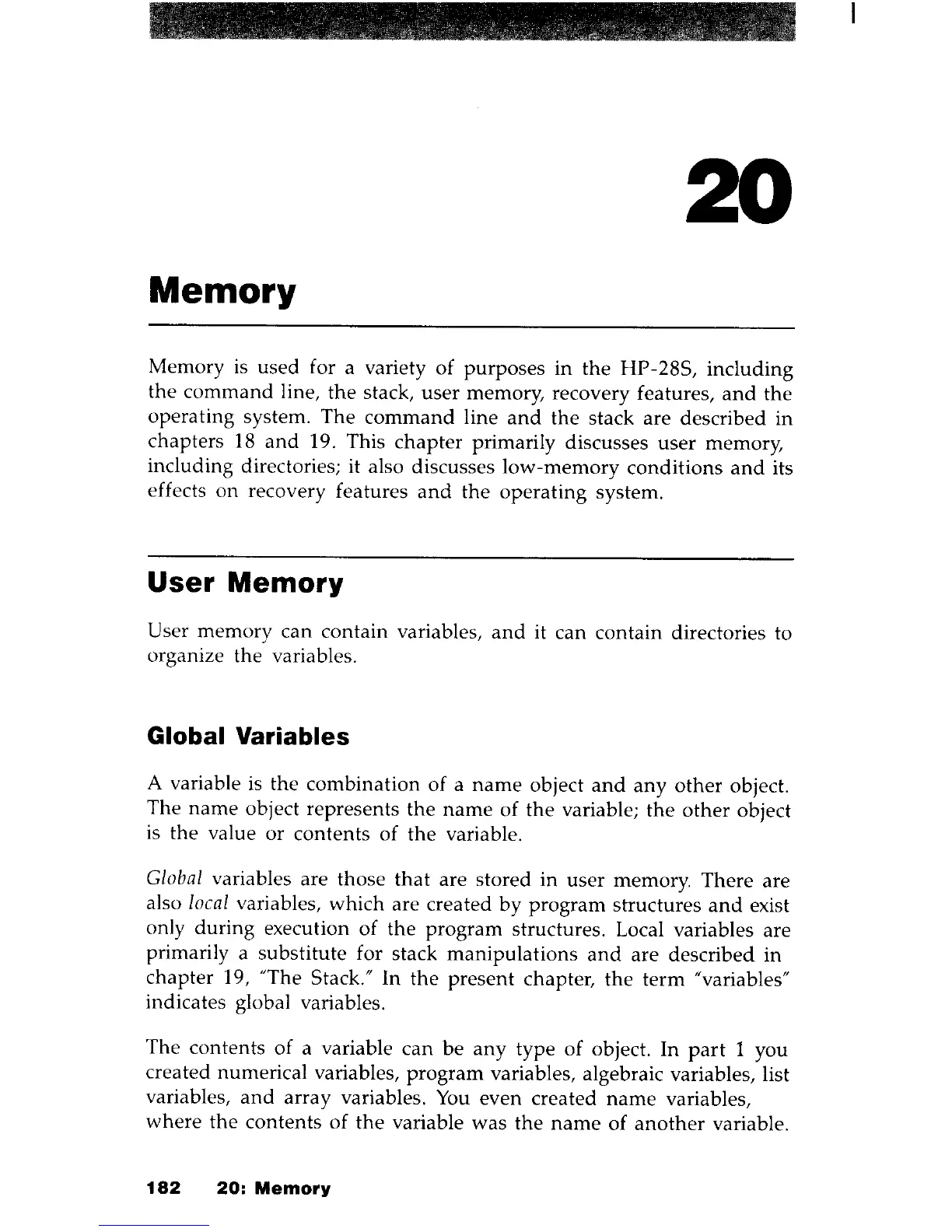20
Memory
Memory
is
used
for a variety
of
purposes
in
the
HP-28S,
including
the
command
line,
the
stack,
user
memory, recovery features,
and
the
operating
system.
The
command
line
and
the
stack are described in
chapters 18
and
19. This
chapter
primarily discusses
user
memory,
including directories; it also discusses
low-memory
conditions
and
its
effects
on
recovery features
and
the
operating
system.
User
Memory
User
memory
can contain variables,
and
it can contain directories to
organize the variables.
Global Variables
A variable
is
the
combination
of a
name
object
and
any
other
object.
The
name
object represents
the
name
of
the
variable;
the
other
object
is
the
value or
contents
of
the
variable.
Global variables are those
that
are stored in user memory. There are
also local variables,
which
are created
by
program
structures
and
exist
only
during
execution
of
the
program
structures. Local variables
are
primarily a substitute for stack
manipulations
and
are described in
chapter
19, "The Stack." In
the
present
chapter,
the
term
"variables"
indicates global variables.
The contents
of
a variable
can
be
any
type
of
object. In
part
1 you
created numerical variables,
program
variables, algebraic variables, list
variables,
and
array variables.
You
even created
name
variables,
where
the
contents
of
the
variable
was
the
name
of
another
variable.
182
20:
Memory
